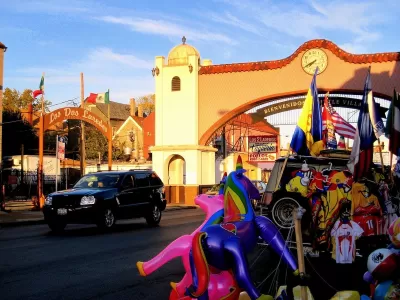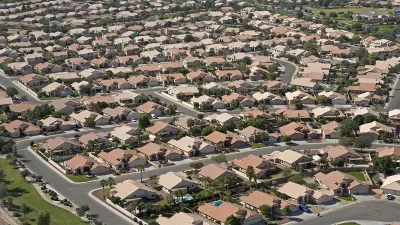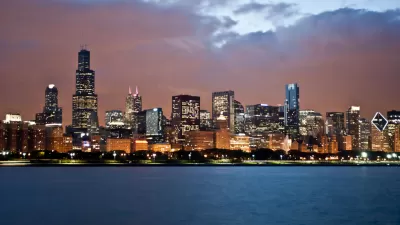Foot traffic and business in the largely Latino Little Village neighborhood declined by as much as 50 percent, with many businesses staying closed on Tuesday.

A normally bustling, predominantly Latino Chicago neighborhood became a “ghost town” by Monday afternoon as residents took steps to protect themselves against President Trump’s deportation plan and an extreme winter storm.
According to a Bloomberg article by Miranda Davis, Alicia A. Caldwell, and Daniela Sirtori, “Foot traffic at the 2-mile stretch of 26th Street in the Little Village neighborhood plunged — by some measures, the decline had hit the 50%-mark, according to Jennifer Aguilar, who heads the local chamber of commerce and spoke to a number of the 400 or so businesses in the area. On Tuesday morning, a number of shops were simply closed.”
Fears of raids could have serious implications for local businesses and the companies that employ immigrant workers, particularly in Chicago, which President Trump has promised to target. “When businesses have less foot traffic, they’re going to generate less revenue. That’s less taxation for our schools, for our health system, for our public safety, police departments, everything that keeps every Chicagoan safe,” said Rebecca Shi, chief executive officer at the American Business Immigration Coalition.
The authors note that the Little Village neighborhood “brings more tax revenue to City Hall than any other retail stretch other than the Magnificent Mile, the downtown shopping street that features luxury stores including Saks Fifth Avenue, Rolex and Burberry.”
FULL STORY: Threat of Immigration Raid Turns Chicago Hub Into Ghost Town

Trump Administration Could Effectively End Housing Voucher Program
Federal officials are eyeing major cuts to the Section 8 program that helps millions of low-income households pay rent.

Planetizen Federal Action Tracker
A weekly monitor of how Trump’s orders and actions are impacting planners and planning in America.

Ken Jennings Launches Transit Web Series
The Jeopardy champ wants you to ride public transit.

California Invests Additional $5M in Electric School Buses
The state wants to electrify all of its school bus fleets by 2035.

Austin Launches $2M Homelessness Prevention Fund
A new grant program from the city’s Homeless Strategy Office will fund rental assistance and supportive services.

Alabama School Forestry Initiative Brings Trees to Schoolyards
Trees can improve physical and mental health for students and commnity members.
Urban Design for Planners 1: Software Tools
This six-course series explores essential urban design concepts using open source software and equips planners with the tools they need to participate fully in the urban design process.
Planning for Universal Design
Learn the tools for implementing Universal Design in planning regulations.
Ada County Highway District
Clanton & Associates, Inc.
Jessamine County Fiscal Court
Institute for Housing and Urban Development Studies (IHS)
City of Grandview
Harvard GSD Executive Education
Toledo-Lucas County Plan Commissions
Salt Lake City
NYU Wagner Graduate School of Public Service





























